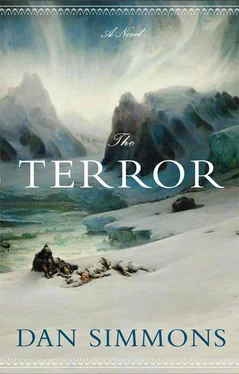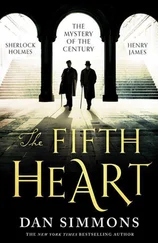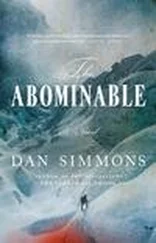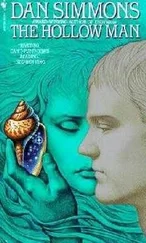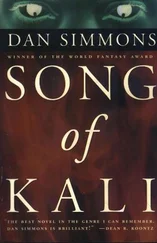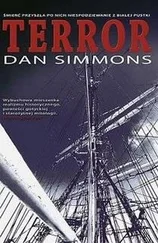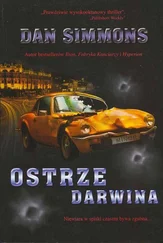It is only 13 August , Crozier repeated to himself. Time enough, if only a small miracle was granted them, to sail and row across the strait – probably man-hauling some short ice portages – the seventy-five miles he estimated to the mouth of Back’s River, there to rerig the battered boats for travel upriver. With a bit more luck, the inlet itself beyond this visible ice jam would be free of ice – because of Back’s Great Fish River’s inevitable high summer flow northward and its warmer water – for as much as sixty miles of the way. After that, on the river itself, they would be racing the oncoming winter south each day while fighting their way upstream, but the voyage was still possible. In theory.
In theory.
This morning – a Sunday if the weary Crozier had not lost track – Goodsir was performing the last of the amputations with the help of his new assistant, Thomas Hartnell, and then Crozier planned to call the men together for a sort of Divine Service.
There he would announce that Goodsir would be staying with the crippled men and scurvy cases and he would bring into the open his plans to take a few of the healthiest men and at least two boats south within the coming week, whether the ice opened or not.
If Reuben Male, Hodgson, Sinclair, or the Hickey conspirators wanted to offer their alternate plans without challenging his authority, Crozier was ready not only to discuss them but to agree to them. The fewer men left at Rescue Camp the better, especially if it meant getting rid of the rotten apples.
The screaming started from the surgical tent as Dr. Goodsir began his operation on Mr. Diggle’s gangrenous left foot and ankle.
A pistol in each pocket, Crozier went to find Thomas Johnson to tell him to assemble the men.
Mr. Diggle, the most universally liked man on the expedition and the excellent cook Francis Crozier had known and worked with for years on expeditions to both poles, died of blood loss and complications immediately after the amputation of his foot and just minutes before muster was called.
Each time the survivors spent more than two days at a camp, the bosuns dragged a stick through the gravel and snow in some relatively open, flat spot to create the rough outline of the Erebus ’s and Terror ’s top and lower decks. This allowed the men to know where to stand during muster and gave them a sense of familiarity. During the first days at Terror Camp and beyond, the muster positions had been crowded to the point of confusion, with more than a hundred men from two ships crowding into the footprint of a single ship’s top deck, but now the attrition had reached the point where the gathering was appropriate for a single ship’s mustering.
In the silence after the roll was called and before Crozier’s brief reading of Scripture – and in the deeper silence in the aftermath of Mr. Diggle’s screams – the captain looked out at the clusters of ragged, bearded, pale, filthy, hollow-eyed men leaning forward toward him in a sort of tired-ape slump that was meant to be a brisk standing at attention.
Of the thirteen original officers on HMS Erebus , nine were dead: Sir John, Commander Fitzjames, Lt. Graham Gore, Lt. H. T. D. Le Vesconte, Lt. Fairholme, First Mate Sergeant, Second Master Collins, Ice Master Reid, and Chief Surgeon Stanley. The surviving officers consisted of the first and second mates, Des Voeux and Couch; the assistant surgeon, Goodsir (who now joined the muster ranks late, his posture even more slumped than the other men’s, his eyes downcast with exhaustion and defeat); and the purser, Charles Hamilton Osmer, who had survived a serious bout of pneumonia only to be prostrated in his tent now by scurvy.
It did not escape Captain Crozier’s attention that all of Erebus ’s commissioned Navy officers were dead and that the survivors were mere mates or civilians granted the honorary title of officer for wardroom purposes.
Erebus ’s three warrant officers – Engineer John Gregory, Bosun Thomas Terry, and Carpenter John Weekes – were all dead.
Erebus had left Greenland with twenty-one petty officers, and at today’s muster, fifteen of them were still alive, although some of them – such as Purser’s Steward William Fowler, who had never fully recovered from his burns at the Carnivale, were little more than mouths to be fed during the march.
A muster of Erebus ’s able seamen on Christmas Day of 1845 would have heard nineteen sailors answering the call. Fifteen of them were still living.
Of seven Royal Marines who’d originally answered the muster call on Erebus , three had survived to this day in August of 1848 – Corporal Pearson and Privates Hopcraft and Healey – but all were too sick from scurvy even to stand guard or go hunting, much less haul boats. But this morning they stood leaning on their muskets among the other ragged, slumping forms.
Of the two ship’s boys on Erebus ’s muster – both actually men of eighteen when the two ships had sailed – both David Young and George Chambers had survived, but Chambers had been so heavily concussed by the thing from the ice during the Carnivale that he had been little more than an idiot since that night of fire. Still, he was able to haul when instructed and to eat when told to and to keep breathing without prompting.
So, according to the muster just finished, thirty-nine of Erebus ’s original complement of sixty-five souls were still alive as of 13 August 1848.
The officers of HMS Terror had fared a bit better than those of Erebus , at least in the sense that two Naval officers – Captain Crozier and Second Lieutenant Hodgson – had survived. Second Mate Robert Thomas and Mr. E. J. Helpman, Crozier’s clerk-in-charge and another civilian who served the expedition with officer’s rank, were the other remaining officers.
Not answering muster today were Crozier’s lieutenants Little and Irving, as well as First Mate Hornby, Ice Master Blanky, Second Master MacBean, and both his surgeons, Peddie and McDonald.
Four of Terror ’s original eleven officers were still alive.
Crozier had started the expedition with three warrant officers – Engineer James Thompson, Bosun John Lane, and Master Carpenter Thomas Honey – and all three were still living, although the engineer had wasted away to a hollow-eyed skeleton too weak to stand, much less haul, and Mr. Honey not only showed advanced symptoms of scurvy but had had both feet amputated the night before. Incredibly, as of this assembly, the carpenter was still alive and even managed to shout, “Present!” from his tent when his name was called at muster.
Terror had sailed with twenty-one petty officers three years earlier and sixteen were still alive on this cloudy August morning – Stoker John Torrington, Captain of the Foretop Harry Peglar, and quartermasters Kenley and Rhodes had been the only casualties in that group until just moments ago when Cook John Diggle had joined the ranks of the dead.
Where nineteen able seamen had once answered Terror ’s muster, ten now did, although eleven had survived: David Leys still lay comatose and unresponsive in Dr. Goodsir’s tent.
Of HMS Terror ’s contingent of six Royal Marines, none had survived. Private Heather, who had lingered for months with his shattered skull, finally died the day after they had left River Camp, and his body was left on the gravel without burial or comment.
The ship had recorded two “Boys” on its original muster, and now only one – Robert Golding, almost twenty-three years old and certainly no longer a boy, although gullible in a boy’s way – answered to the roll.
Out of an original muster of sixty-two souls on HMS Terror , thirty-five had survived to see this Divine Service at Rescue Camp on 13 August, 1848.
Читать дальше
